Where to Live in Rome: A Guide for Expats
by Adriana ruiz
Rome offers a diverse range of neighborhoods, each with its unique charm and amenities. Expats moving to Rome can choose from historic centers, vibrant student areas, or tranquil residential zones. Here are some of the top neighborhoods for different expat categories:
For Families
Monteverde
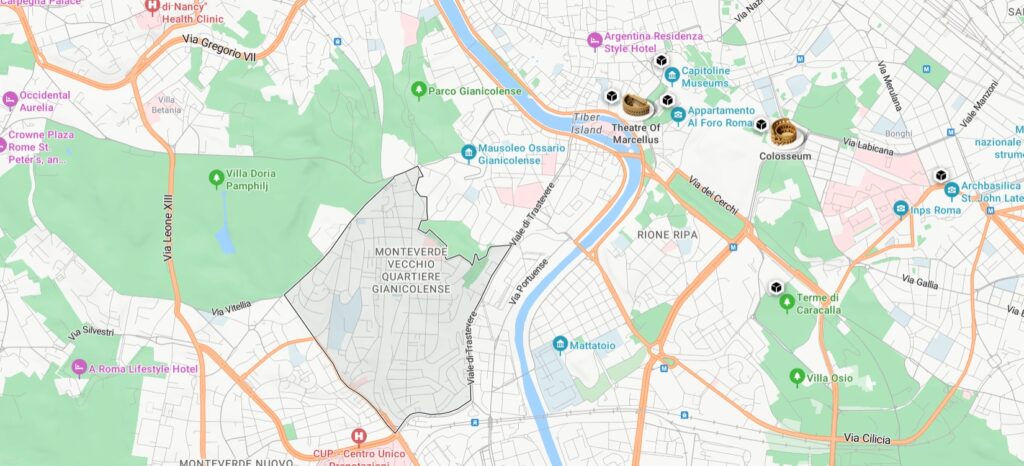
Monteverde in Rome is a charming neighborhood that offers a serene retreat from the bustling city center, making it an attractive area for families. Here’s a brief overview highlighting its suitability for family life:
Affordability: Monteverde is considered to be on the pricier side, reflecting its desirability and the high quality of life it affords its residents. The cost of living here may be higher than in other neighborhoods, but many find the tranquil atmosphere and amenities to be worth the investment.
Public Transport: The area is well-served by public transportation. Families can easily navigate the city using the efficient bus services, and tram lines 8 and 3 provide convenient connections to the heart of Rome. Additionally, the Quattro Venti train station offers quick access to other parts of the city, including Ostiense and Piramide, making commuting and exploring hassle-free.
Family Activities: Monteverde is renowned for its lush green spaces, such as Villa Pamphili, the largest public park in Rome, and Villa Sciarra, with its beautiful fountains and statues. Families can enjoy picnics, leisurely walks, playgrounds for children, and various outdoor activities. Moreover, the ‘Passeggiata del Gianicolo’ offers one of the most breathtaking views of the Eternal City, and it’s a perfect spot for an evening stroll. The neighborhood also hosts cafes, and restaurants where families can savor local cuisine and partake in the community atmosphere.
Eur
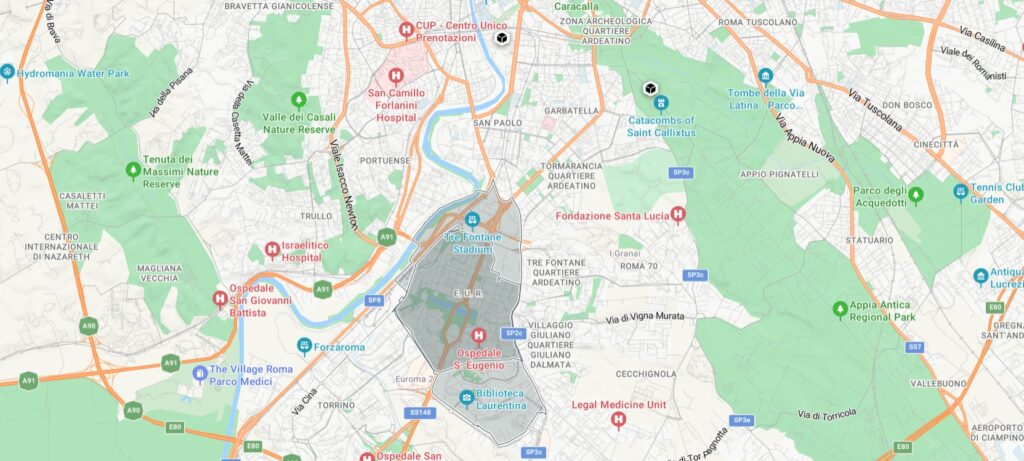
EUR in Rome is a distinct neighborhood that stands out for its unique blend of history, architecture, and modern amenities, making it a great choice for families. Here’s an overview of EUR’s family-friendly attributes:
Affordability: EUR is a neighborhood that offers a mix of affordability and quality. While some areas can be expensive, reflecting the modern amenities and spacious apartments, there are also options for those with a more modest budget. The overall cost of living provides good value considering the quality of life and the services available in the area.
Public Transport: EUR is served by a robust public transport network. The area is accessible via multiple bus lines, and the metro line B has several stops in EUR, including EUR Palasport and EUR Fermi, which link families directly to the city center and other key areas of Rome. This makes it easy for families to move around the city without the need for a car.
Family Activities: EUR is home to a variety of family-friendly activities and spaces. The neighborhood boasts wide boulevards for strolling and cycling, and the iconic Palazzo della Civiltà Italiana, also known as the Square Colosseum, is a must-see landmark. Families can also visit the Museum of Roman Civilization or enjoy the green spaces at EUR Park, which includes a lake for boating. The area also hosts various cultural events and exhibitions throughout the year, providing educational and entertaining experiences for both children and adults.
Trastevere
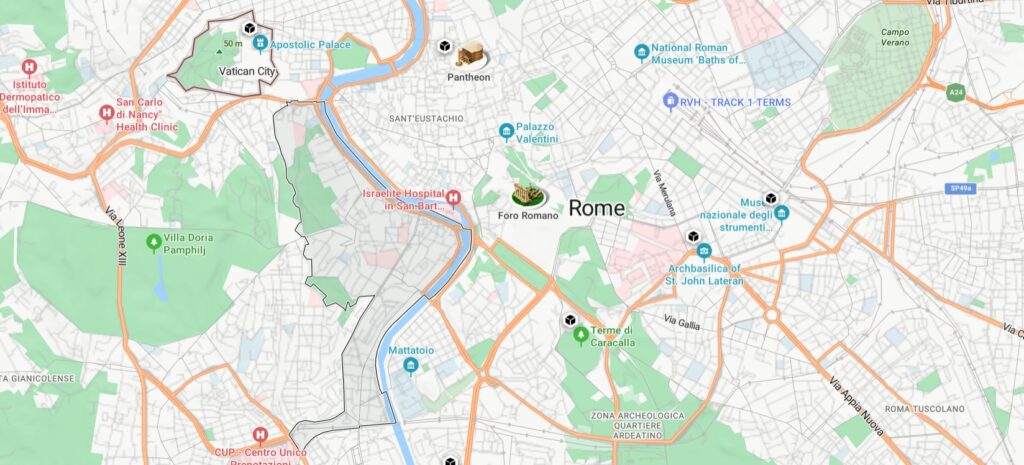
Trastevere in Rome is a vibrant and historic neighborhood that provides a picturesque setting for family life. Here’s an overview of Trastevere’s family-friendly aspects:
Affordability: Trastevere has a range of housing options, from more affordable apartments to pricier, renovated spaces. While it has become more upscale over the years, families can still find good value for the quality of life it offers. The neighborhood’s charm and character often justify the expense for those who choose to call it home.
Public Transport: Its streets are serviced by numerous bus lines, and the Trastevere train station links to the city’s main transport hubs like the Piramide metro station and Termini. The neighborhood’s central location also means that many of its attractions are within walking distance, adding to its appeal for families who prefer to explore on foot.
Family Activities: Families in Trastevere can enjoy a variety of activities. The area is known for its beautiful squares, such as Piazza di Santa Maria in Trastevere1, which are perfect for socializing and outdoor play. The cobblestone streets are lined with shops, cafes, and restaurants that offer a taste of authentic Roman life. Cultural landmarks like the Basilica of Santa Maria and the Church of Santa Cecilia provide historical exploration opportunities2. Additionally, the Tiber Island and the riverside are nearby, offering scenic walks and outdoor entertainment.
Parioli
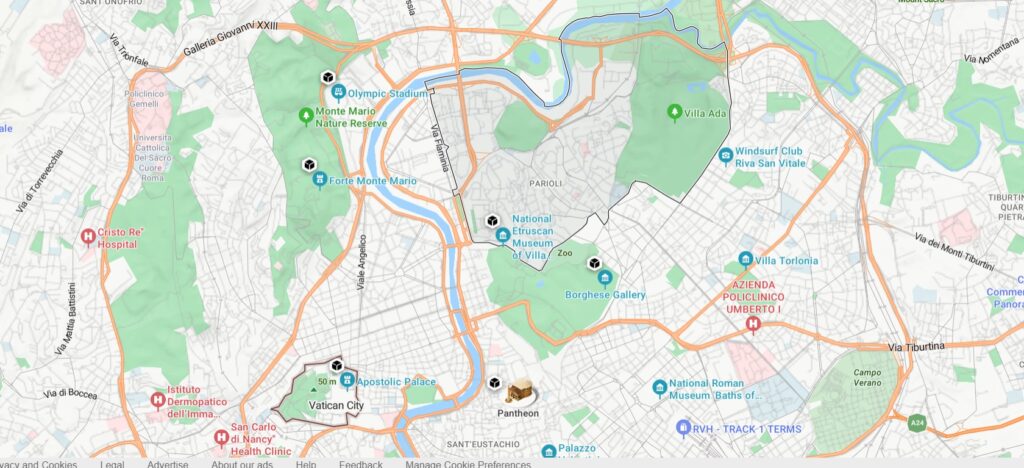
Parioli in Rome is a distinguished neighborhood that epitomizes elegance and tranquility, presenting itself as an ideal locale for family living. Here’s a snapshot of what makes Parioli a top choice for families:
Affordability: Parioli is known for its upscale living standards and, as such, comes with a higher price tag. This affluent area offers a secure and high-quality lifestyle, which many families consider a worthwhile investment for the benefits it provides.
Public Transport: The area is accessible via multiple bus lines, and the nearby Euclide train station ensures a smooth connection to the city center and beyond. This makes daily commutes and family outings convenient and stress-free.
Family Activities: The neighborhood boasts several parks, including the expansive Villa Borghese, where families can indulge in outdoor activities, visit the Bioparco di Roma zoo, or explore the Galleria Borghese art museum. Parioli is also home to fine dining establishments and casual eateries, offering a variety of options for family meals. The local culture is family-oriented, with community events and activities that cater to all ages.
Prati
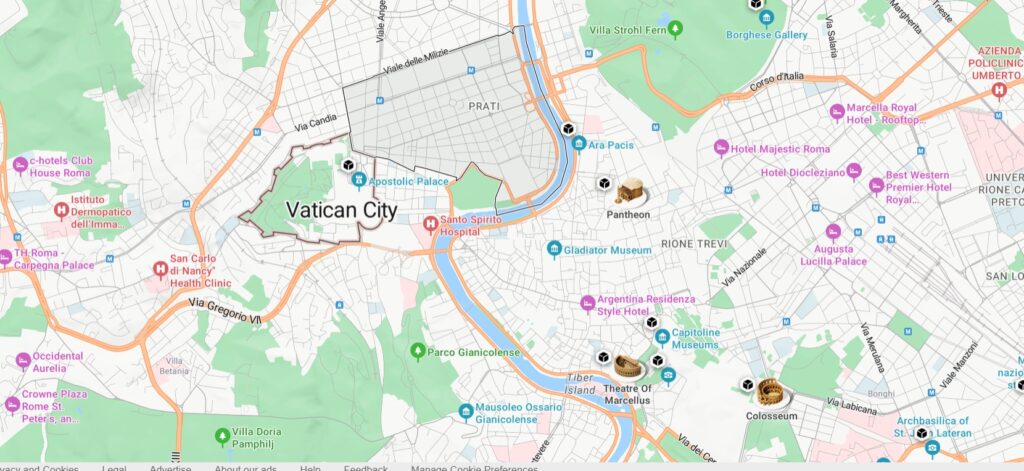
Prati in Rome is a refined neighborhood that combines the convenience of city living with the comforts ideal for family life. Here’s an outline of what makes Prati a great choice for families:
Affordability: While Prati is one of the more upscale districts in Rome, it offers a range of housing options that cater to various budgets. The neighborhood’s housing market reflects its popularity and the quality of life it provides. Families often consider the area’s safety, elegance, and community vibe as justifying the expense.
Public Transport: Prati is excellently connected to the rest of Rome. The area is served by several bus lines, and the Metro Line A stations of Ottaviano and Lepanto make the commute to central Rome and other key areas both quick and easy. This network of public transport is a boon for families looking to balance work and leisure.
Family Activities: Prati is known for its proximity to the Vatican and the majestic Castel Sant’Angelo, offering cultural experiences right at your doorstep. The neighborhood is also home to the lush gardens of Villa Borghese, where families can enjoy nature, visit the zoo, or explore museums. The streets of Prati are lined with a variety of shops, restaurants, and gelaterias, providing ample opportunities for family outings and dining
For Students
San Lorenzo
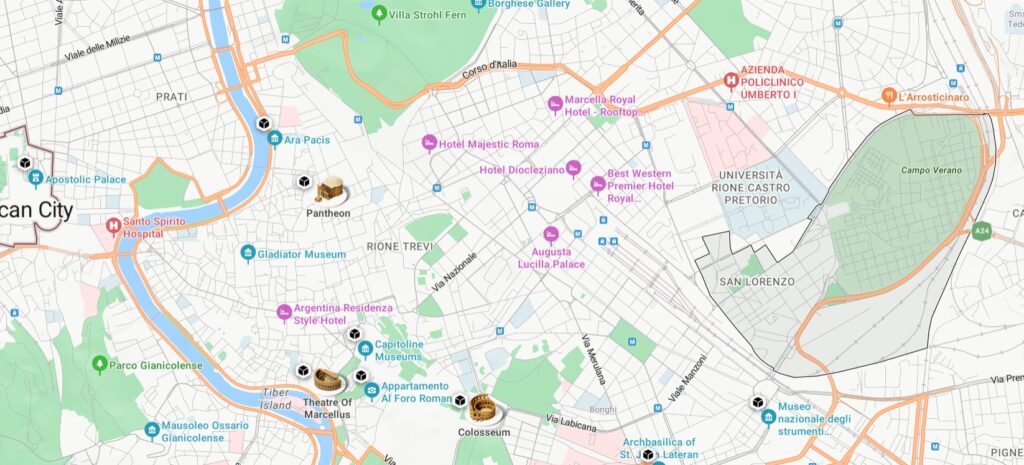
San Lorenzo in Rome is a vibrant neighborhood that serves as a hub for students, offering an eclectic mix of academic life and leisure. Here’s a concise overview emphasizing its appeal to the student population:
Affordability: San Lorenzo is known for its reasonable living costs, which is particularly appealing to students. The area provides a variety of affordable housing options, from shared apartments to budget-friendly studios, making it a practical choice for those studying in Rome.
Public Transport: While San Lorenzo does not have its own metro station, it is well-connected by several bus lines. The neighborhood’s proximity to Termini Station, a 15-minute walk away, offers students easy access to both metro and regional trains, facilitating travel throughout the city and beyond.
Activities: The neighborhood’s lively atmosphere is fueled by its youthful population and proximity to La Sapienza University, the largest in Europe. San Lorenzo is dotted with street art, bustling piazzas, and a plethora of bars, cafes, and eateries that cater to a student’s budget and social life. Cultural venues and community events add to the area’s charm, making it a dynamic place to live and study
Pigneto
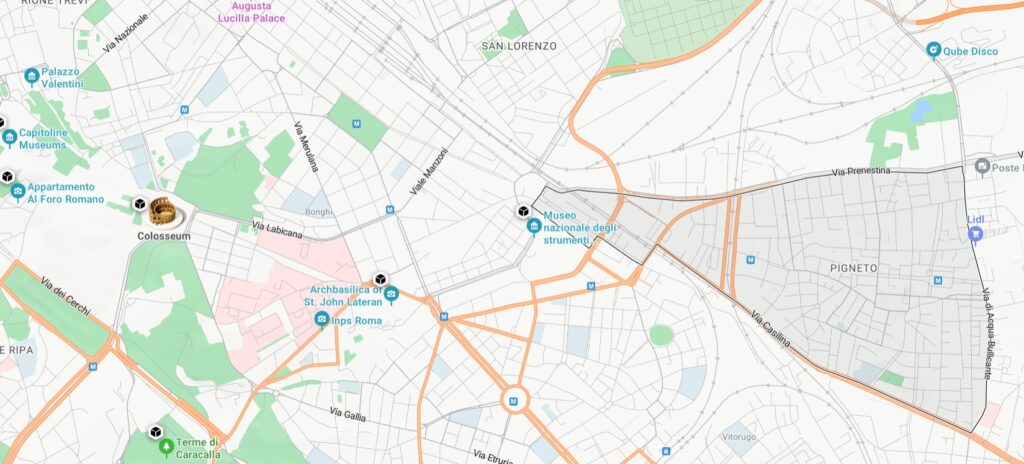
Pigneto in Rome is an eclectic neighborhood that has become a favorite among students for its vibrant culture and affordable living. Here’s a brief overview highlighting its suitability for student life:
Affordability: Pigneto is appreciated for its cost-effective living options, making it a practical choice for students. The neighborhood offers a variety of housing from shared apartments to budget-friendly studios, reflecting the area’s appeal to the student demographic.
Public Transport: Pigneto is accessible via multiple bus lines, and while it doesn’t have its own metro station, the proximity to the metro stop along Line C connects students to the rest of the city. The area’s walkability also adds to its convenience for students.
Activities: Known for its alternative scene, Pigneto is filled with street art, indie cafes, and a lively nightlife that caters to a younger crowd. The neighborhood hosts a range of bars, restaurants, and cultural events, fostering a dynamic and creative environment for students.
Piazza Bologna
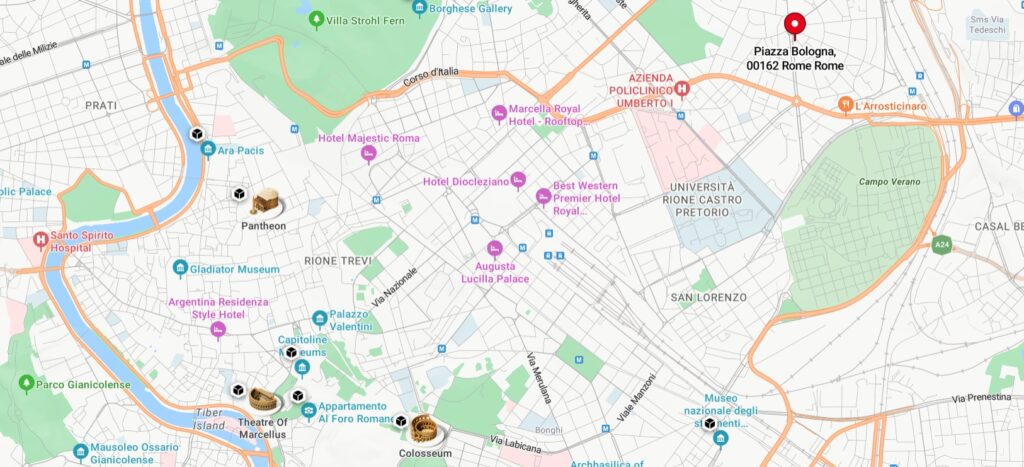
Piazza Bologna in Rome is a welcoming area that strikes a balance between the lively student life and the calm of a residential area. Here’s a brief overview highlighting its suitability for student life:
Affordability: Piazza Bologna offers a range of housing options that cater to students’ budgets. The area is known for its shared rooms and student apartments, providing practical and economical living spaces.
Public Transport: It is well-connected to the rest of the city, particularly with a metro stop on the B Line. This ensures that students have easy access to the university campuses and the city center, making it a convenient location for daily commutes.
Activities: Piazza Bologna has a more low-key vibe compared to other student areas, yet it still offers plenty of amenities. Students can find traditional shops, as well as a variety of dining and socializing options, all within a tranquil suburb that remains within reach of Rome’s vibrant city life.
Tiburtina
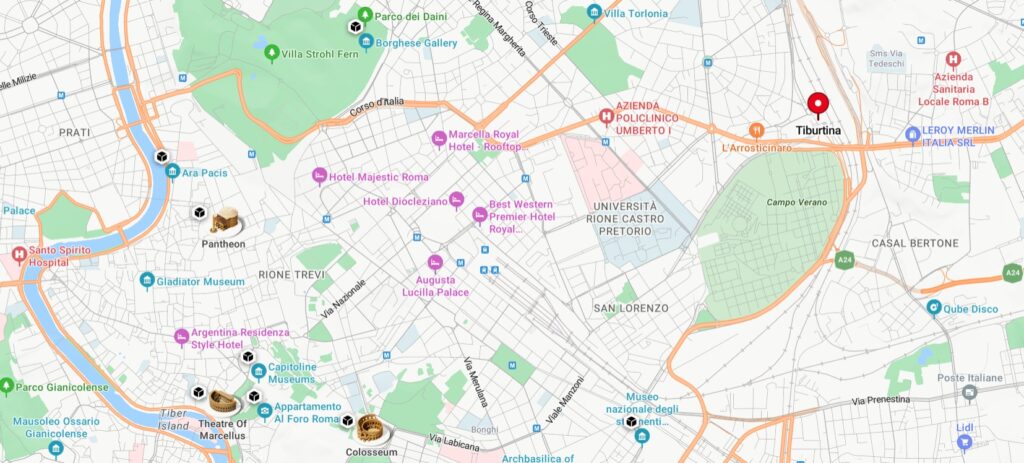
Tiburtina in Rome is an increasingly popular area among students due to its vibrant atmosphere and strategic location. Here’s a brief overview highlighting its suitability for student life:
Affordability: Tiburtina is known for its relatively affordable living costs compared to other areas in Rome. Students can find a range of housing options, from shared apartments to private studios, that cater to different budgets. The presence of several university campuses nearby makes Tiburtina a cost-effective choice for students looking to minimize their daily commute.
Public Transport: It boasts excellent public transport links, including the Tiburtina train station, one of Rome’s major railway hubs. It provides easy access to both local and national destinations, making it convenient for students to travel around the city and beyond. Additionally, the Bologna Metro Station is within walking distance, offering quick connections to the city center and other universities.
Activities: Tiburtina is a lively area with a mix of cultural and social activities suited to student life. The vicinity to La Sapienza University ensures a youthful and dynamic environment, with plenty of cafes, bars, and eateries where students can socialize and relax. The district also features affordable shopping options and markets, providing a practical and enjoyable living experience for those studying in Rome.
Trastevere

Trastevere in Rome is a beloved neighborhood that captures the essence of Roman life, making it an ideal choice for students seeking an authentic living experience. Here’s a brief overview highlighting its suitability for student life:
Affordability: Despite being one of the more expensive neighborhoods, many students find shared apartments or rooms that provide a balance between affordability and the vibrant lifestyle Trastevere offers.
Public Transport: Trastevere is connected to the rest of Rome, with multiple bus lines and the Trastevere train station. The Tram 8 line also runs through the neighborhood, offering direct access to Piazza Venezia and the city center.
Activities: Known for its picturesque streets and historical ambiance, Trastevere is home to The American University of Rome and John Cabot University, two large American universities. The area is bustling with cafes, bars, and restaurants that cater to a diverse crowd, offering plenty of opportunities for socializing and cultural immersion. The neighborhood’s lively nightlife and proximity to various cultural sites make it a stimulating environment for students to live and study in.
Monti
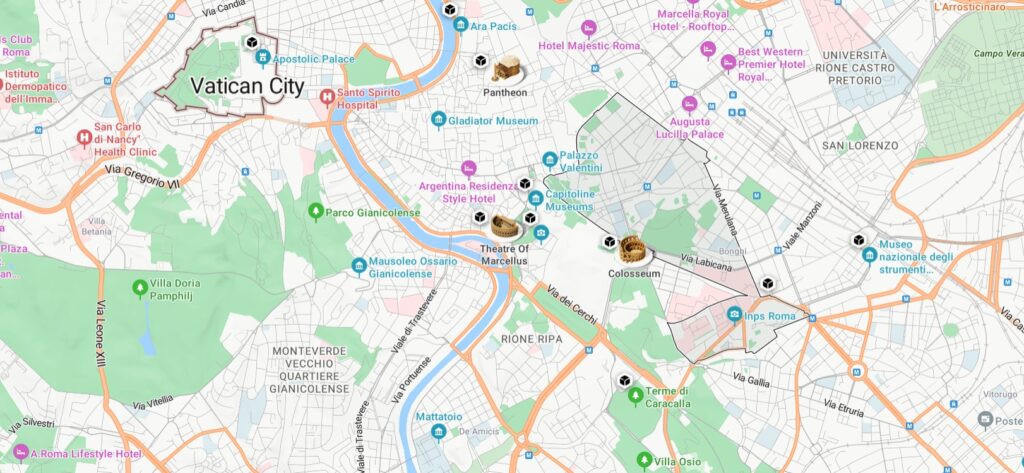
Monti in Rome is a vibrant and eclectic neighborhood that has become a favorite among students for its central location and historical charm. Here’s a brief overview highlighting its suitability for student life:
Affordability: Monti offers a variety of housing options that cater to students’ budgets. While it can be on the higher end due to its prime location, students often find reasonable accommodations by opting for shared apartments or rooms.
Public Transport: The neighborhood is exceptionally well-connected, with the Cavour, Termini, and Colosseo metro stops nearby, making it easy for students to commute to universities and other parts of the city.
Activities: Monti is known for its bohemian vibe, with a plethora of vintage shops, artisan boutiques, and cozy cafes that provide a lively atmosphere for students. It’s a place where history meets modernity, offering cultural experiences alongside contemporary conveniences. The neighborhood’s proximity to major landmarks like the Colosseum also means that students can immerse themselves in the rich tapestry of Rome’s history.
EUR

EUR in Rome is a distinct neighborhood that stands out for its modernist architecture and planned layout, offering a unique living experience for students. Here’s a brief overview highlighting its suitability for student life:
Affordability: EUR provides a range of accommodation options that can suit the budgets of students. While it may not be the cheapest area in Rome, its modern amenities and unique character provide value for those interested in living in a historically rich and architecturally significant area.
Public Transport: The neighborhood is accessible via the Metro Line B, which connects to the city center and other key locations. Additionally, there are multiple bus routes that service the area, ensuring that students can easily navigate to their destinations.
Activities: EUR is not the typical image of Rome with its grand avenues and monumental buildings, such as the iconic Palazzo della Civiltà Italiana. However, it offers a blend of history, culture, and modernity, with attractions like museums and live music venues that can enrich the student experience. The district’s proximity to the seaport in Ostia also provides additional leisure opportunities for students. Adding to this, EUR is home to several restaurants offering a variety of cuisines, perfect for socializing and dining out. The EUR Lake, also known as Laghetto dell’Eur, is a picturesque spot that adds to the area’s charm, providing a serene environment for relaxation and outdoor activities.
Trieste
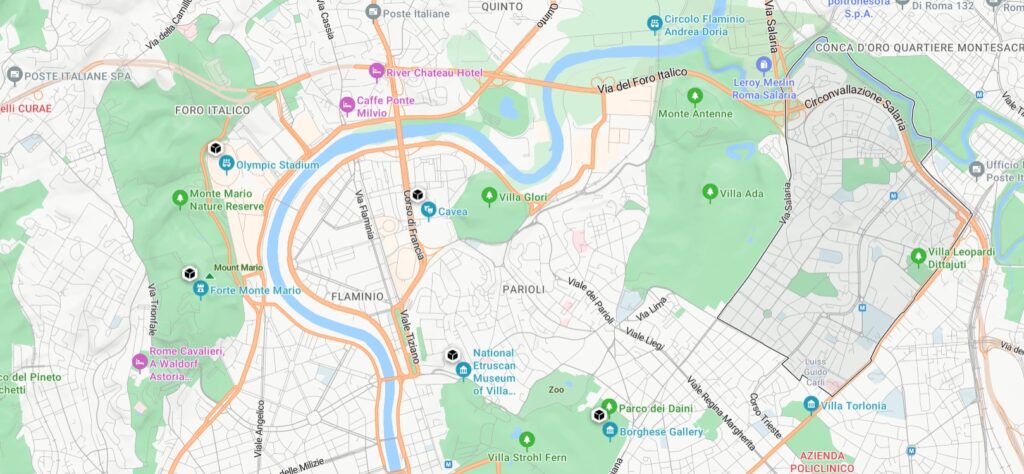
Trieste is an excellent neighborhood for students in Rome, especially for those looking for convenience near metro stations. Here’s an overview of its benefits:
Affordability: Trieste offers a range of housing options that cater to students’ budgets. From shared apartments to private studios, the area provides affordable living without compromising on the Roman experience. Its balance of cost and quality makes it a practical choice for students.
Public Transport: The neighborhood’s accessibility is one of its strongest points. With several metro stations nearby, including Sant’Agnese Annibaliano and Libia on the Metro B line, students can easily navigate the city. This network connects them to universities, cultural sites, and social hubs, making Trieste a strategic location for student life.
Activities: Trieste is not just about studies and transport; it’s a district brimming with life. Students can enjoy a variety of cafes, parks, and local markets, providing a well-rounded lifestyle. The proximity to Villa Ada and Villa Torlonia offers green spaces for relaxation and study breaks.
Centocelle
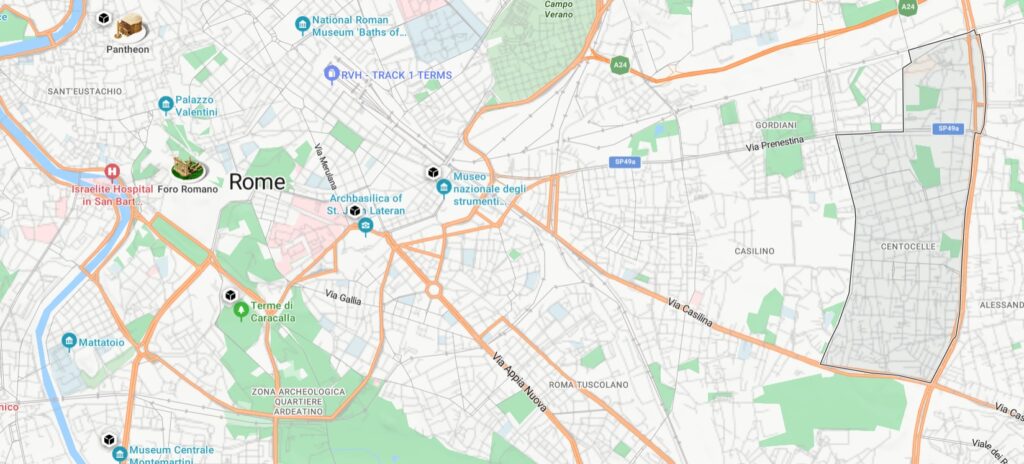
Centocelle is an appealing neighborhood for students in Rome, offering a blend of residential comfort and urban convenience, particularly around the metro stations. Here’s an overview of its suitability:
Affordability: Centocelle presents a variety of housing options suitable for students’ budgets. The area is known for its reasonable rental prices, providing both shared and private accommodations that cater to different financial situations. This affordability, combined with the local amenities, makes Centocelle an attractive choice for students.
Public Transport: The neighborhood boasts excellent public transport connections, including the Parco di Centocelle and Alessandrino metro stations on Line C, and the Villini station of the Rome–Giardinetti railway. These links offer students easy access to university campuses and the city center, ensuring that they can navigate Rome with ease and efficiency.
Activities: Centocelle is not just a place to live and study; it’s a community with a vibrant social scene. Students can explore a range of activities, from historical sites like the Acquedotto Alessandrino to cultural hubs such as Forte Prenestino. The area also offers green spaces like the Archeological Park of Villa Gordiani, perfect for leisure and outdoor activities. Additionally, the neighborhood’s cafes, restaurants, and bars provide ample opportunities for relaxation and socializing.
For Diplomats
Prati

Prati is a refined neighborhood in Rome that presents a sophisticated option for those seeking a central location. Here’s a brief overview highlighting its suitability:
Affordability: While Prati is one of Rome’s more upscale neighborhoods, it offers a range of living options. The cost of living might be higher compared to other areas, but it reflects the quality and exclusivity of the neighborhood, making it a worthy choice for those who prioritize a distinguished lifestyle.
Public Transport: Prati ensures excellent mobility with its well-connected transit system. The Metro A line and various bus routes traverse the area, offering efficient and convenient access to the rest of the city. Its central location also affords effortless reach to international embassies, government offices, and cultural landmarks.
Activities: The neighborhood is not only about elegance; it’s also about convenience and culture. Prati is close to Vatican City and is surrounded by a variety of shops, restaurants, and cultural venues, offering a vibrant atmosphere that’s perfect for socializing and relaxation after work.
Parioli

Parioli in Rome is an esteemed neighborhood that serves as an excellent choice for diplomats seeking a tranquil environment. Here’s a brief overview highlighting its suitability:
Affordability: Parioli, known for its exclusivity, offers a variety of housing options. While the cost of living is on the higher end, it is commensurate with the neighborhood’s status and the serene lifestyle it provides.
Public Transport: While Parioli itself doesn’t have a metro station directly within its boundaries, it is served by several bus lines, providing convenient connections to key areas of Rome. One of the main bus routes serving Parioli is bus line 360, which runs through the heart of the neighborhood, connecting it to Piazza Mancini and the historic city center. This route offers residents and visitors a convenient way to reach popular landmarks such as Piazza del Popolo, Villa Borghese, and the Spanish Steps.
Activities: It is close to the lush Villa Borghese gardens and is dotted with fine dining restaurants and cultural institutions, providing a balanced lifestyle of work and leisure.
Aventino
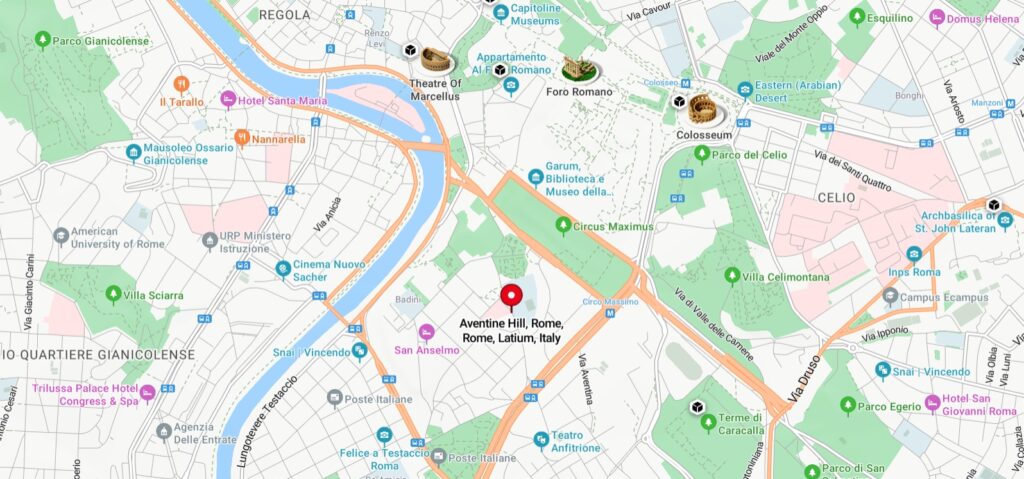
Aventino is a serene and prestigious area in Rome that offers diplomats a central location. Here’s a brief overview highlighting its suitability:
Affordability: Aventino is known for its elegant villas and sophisticated gardens, reflecting its ancient status as a ‘Sacred Mount’. While it is a premium residential area, it provides a range of housing options, catering to those who seek a peaceful environment without compromising on the quality of life.
Public Transport: Bus lines such as 81, 628, and 810 traverse Aventino, linking it to nearby areas and major transportation hubs. These buses provide access to popular landmarks, including the Colosseum, Roman Forum, Circus Maximus, and Termini Station. Additionally, Aventino is within walking distance of the Circo Massimo and Piramide metro stations. From here, travelers can access the Metro B line, providing further connectivity to other parts of the city. Its strategic location allows for quick travel to embassies, international organizations, and the city center.
Activities: Aventino is not just a quiet retreat; it’s also rich in history and culture. With historical sites like the Basilica di Santa Sabina and the famous keyhole view at the villa of the Cavalieri di Malta, Aventino offers a unique blend of tranquility and cultural enrichment. The presence of parks like Giardino degli Aranci provides a perfect setting for leisure and relaxation.
Celio
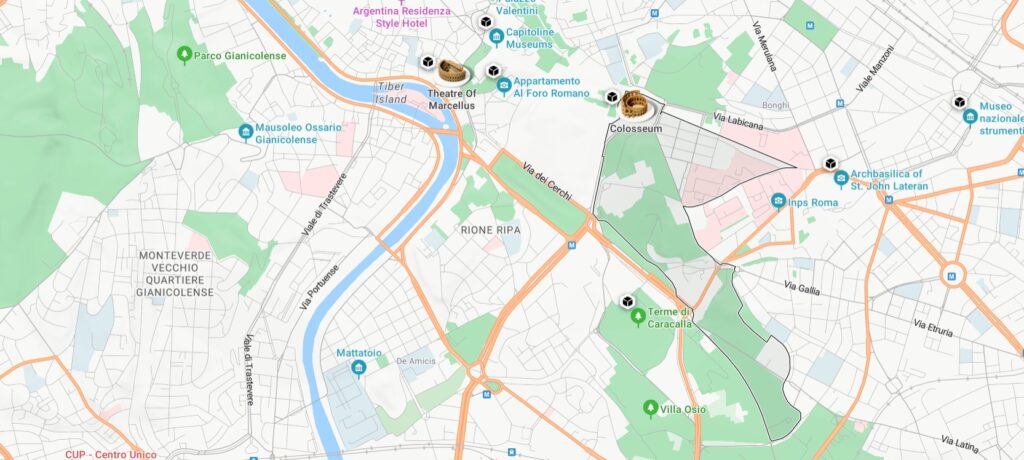
Celio is a historic neighborhood in Rome that offers diplomats a unique blend of ancient charm and modern convenience. Here’s a brief overview highlighting its suitability:
Affordability: Celio, one of Rome’s seven hills, is a neighborhood steeped in history and culture. It provides a variety of accommodation options, from modern apartments to historic residences. While the cost of living may reflect its central location and historical significance, it offers a unique living experience that can justify the investment for those who value a rich cultural environment.
Public Transport: The neighborhood boasts excellent connectivity, with bus lines such as 81, 628, and 810 providing direct access to Rome’s key landmarks and transport hubs. Additionally, the proximity to the Circo Massimo and Piramide metro stations on the Metro B line enhances mobility for residents, ensuring diplomats can navigate the city with ease and reach embassies and international organizations swiftly.
Activities: Celio is not just a place to reside; it’s a destination to explore. With attractions like the Colosseum, Roman Forum, and Baths of Caracalla nearby, it offers a daily immersion into the heart of ancient Rome. The neighborhood is also home to beautiful parks, such as Villa Celimontana, and hosts cultural events like jazz festivals, providing diplomats with a balance of leisure and cultural enrichment right at their doorstep.
Monti

Monti is a vibrant and eclectic neighborhood in Rome that provides a charming option for diplomats who appreciate a mix of history, culture, and modernity. Here’s a brief overview highlighting its suitability:
Affordability: Monti, with its picturesque streets and ancient ruins, offers a diverse range of housing options. While it is a sought-after area due to its central location and historical significance, it provides a variety of living spaces that can accommodate different budgets, making it an attractive choice for those who seek a neighborhood with character and convenience.
Public Transport: The neighborhood is well-served by public transportation, with bus lines such as 81, 628, and 810 connecting residents to the rest of the city. The proximity to the Cavour, Termini, and Colosseo metro stations on the Metro B line further enhances the area’s connectivity. The neighborhood’s central location and proximity to diplomatic missions make it an attractive option for diplomats who value convenience and accessibility.
Activities: Situated near the Colosseum and Roman Forum, Monti is a trendy and cosmopolitan neighborhood that appeals to diplomats seeking a dynamic and vibrant urban lifestyle. Known for its artisanal shops, chic cafes, and eclectic boutiques, Monti offers diplomats a lively and culturally diverse atmosphere.
For Workers at Rome-Based Agencies (RBAs)
Testaccio and Ostiense
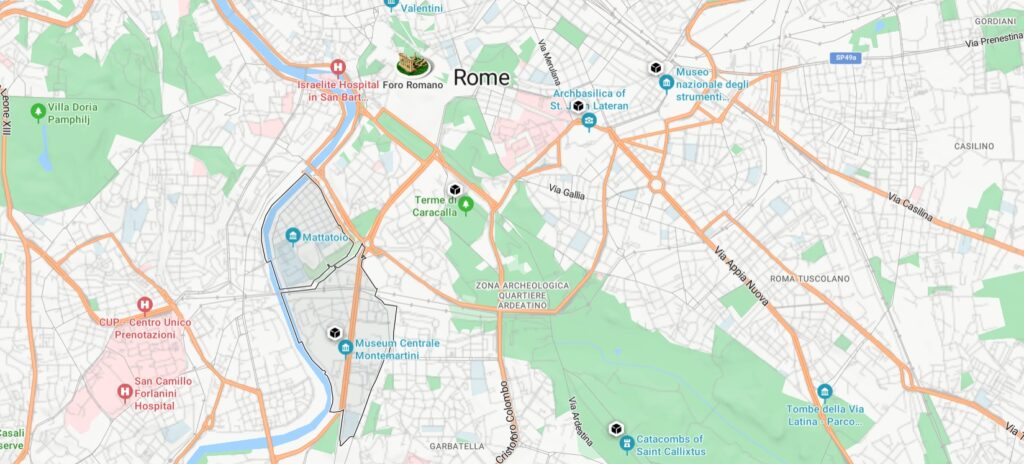
Testaccio and Ostiense are two adjacent neighborhoods in Rome that offer a blend of traditional charm and modern urban culture, making them suitable options for workers at Rome-Based Agencies (RBAs). Here’s a brief overview highlighting their suitability:
Affordability: Testaccio offers a genuine Roman experience with a variety of housing options catering to different budgets. Ostiense has been undergoing urban redevelopment, including efforts to add color and creativity to the area, making it an increasingly attractive place to live. Both neighborhoods offer relatively affordable housing options compared to more central areas.
Public Transport: Both neighborhoods are serviced by multiple bus lines and the Metro B line, known for its proximity to the Roma Ostiense railway station, facilitating easy commutes for RBA workers.
Activities: Testaccio is famous for its food market and traditional Roman cuisine, while Ostiense is recognized for its trendy food scene and vibrant cultural life, including street art and historical sites like the non-Catholic cemetery and the Centrale Montemartini museum. Both areas offer a lively atmosphere that’s perfect for unwinding after work.
Read more about:
20 Places to Explore in Milan – A Local’s Guide
The Colossal Statue of Constantine: FREE Exhibition at the Capitoline Museums
A Guide to Living in Italy with a Dog
15 Must-Visit Museums, Galleries, and Cultural Sites in Italy
Don’t Miss the Chance to Visit the Vatican Museums for Free
A Guide to Visiting the Vatican Museums
Italy’s Most Enchanting Towns Accessible by Train
New Celio Archaeological Park in Rome – Free Admission
Find and Buy Your Ideal Property in Italy with Our Professional Services
Buying Property in Italy – How to Get a Mortgage as a Foreigner
How to Open a Bank Account in Italy as an Expat
Learn Italian and open up new possibilities for your career and personal growth
Prepare for the CILS B1 Citizenship exam to obtain citizenship by marriage, residence or study or work in Italy.
Switching to a self-employment permit from a study or job-seeking one
FAQs for Italian Citizenship by Marriage (2023)
Understanding the Tessera Sanitaria: Your Italian Health Insurance Card
Non-Married Partners: How to Obtain a Residence Permit in Italy as De Facto Cohabitants
How to get tax identification number for foreign citizens (Codice Fiscale)
How to register in Italy as an EU citizen
Mastering Public Transport in Italy
The Advantages of Dual Citizenship with an Italian Passport: Unlocking Boundless Opportunities
What you need to know about Visas and Permits to stay in Italy
Red flags to identify a scam when renting in Italy
Find and Buy Your Ideal Property in Italy with Our Professional Services

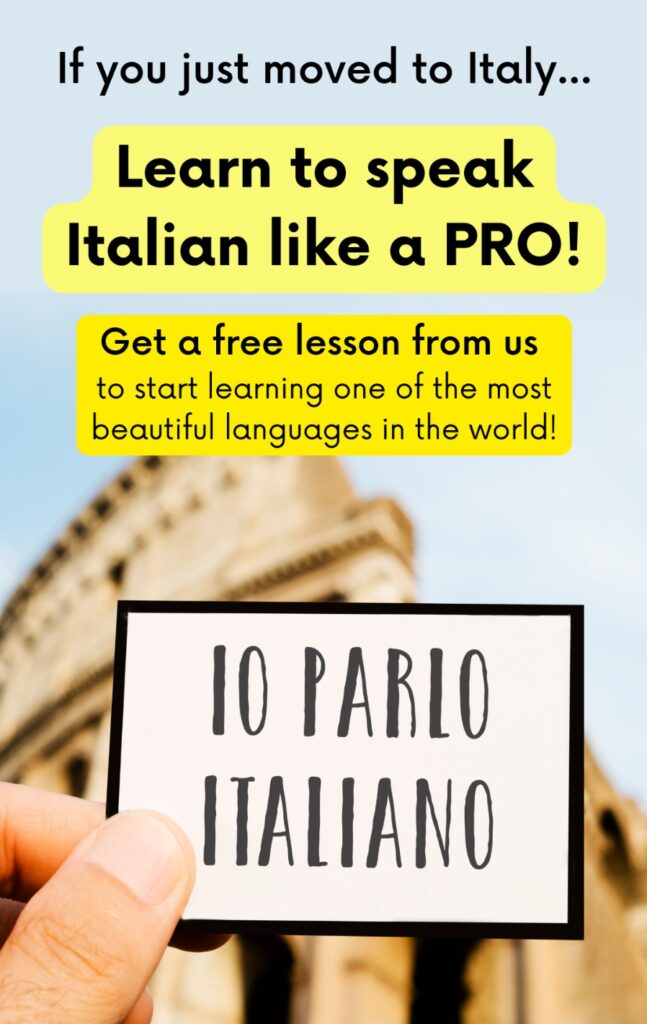

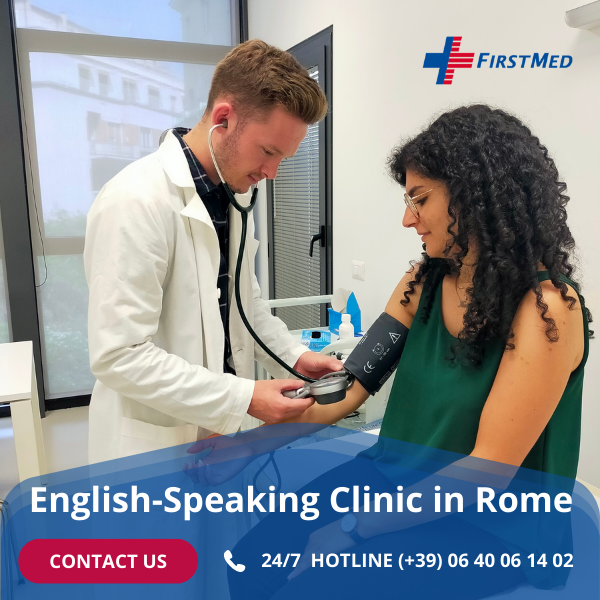

Leave a Comment:
You must be logged in to post a comment.